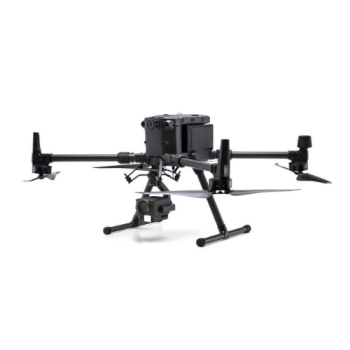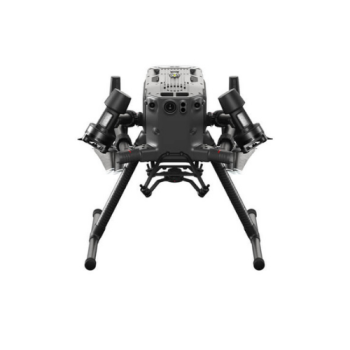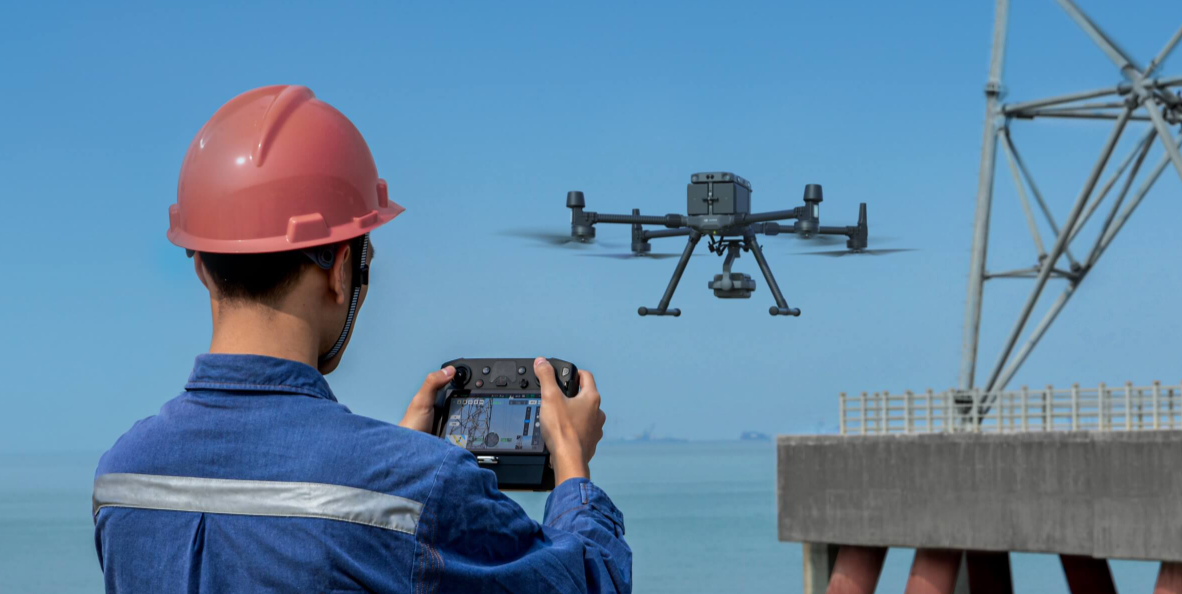Description
The DJI Matrice 300 RTK is a powerful, rugged, and versatile drone designed for demanding industrial, commercial, and rescue operations. Combining cutting-edge technology with a durable design, it offers precision aerial imaging, advanced real-time navigation, and a host of innovative features tailored to professional users. Engineered for harsh environments and complex tasks, the Matrice 300 RTK sets a new standard in the commercial drone industry, offering unmatched accuracy, reliability, and efficiency in aerial operations.
| Key Feature | Description |
|---|---|
| Advanced RTK Navigation | The RTK system provides centimeter-level accuracy, essential for tasks like mapping and surveying, with the option to pair with DJI’s D-RTK 2 GNSS mobile station for enhanced performance in complex environments. |
| Superior Transmission System | DJI’s OcuSync Enterprise technology ensures robust, stable connectivity with a range of up to 15 km, supporting three-channel 1080p video transmission for clear, uninterrupted data and video. |
| Extended Flight Time and Operational Efficiency | With a maximum flight time of up to 55 minutes, the Matrice 300 RTK reduces battery swaps and enables longer missions, ideal for large-scale inspections, surveys, and search-and-rescue operations. |
| All-Weather Capabilities | IP45-rated for resistance against dust, rain, and wind, and capable of operating in temperatures from -20°C to 50°C, ensuring reliable performance in challenging environments. |
| Six-Directional Sensing and Obstacle Avoidance | Equipped with obstacle sensing in all six directions (up, down, forward, backward, left, and right) for 360-degree awareness and safer navigation in complex environments. |
| Versatile Payload Options | Supports multiple payloads, including the DJI Zenmuse H20 series and third-party payloads like L1 LiDAR, enabling versatile applications such as thermal imaging, LiDAR mapping, and multi-sensor configurations. |
| Dual-Operator Mode for Greater Flexibility | Allows one operator to control the drone’s flight while another manages the camera and payload, enhancing mission efficiency and precision, especially in complex tasks like inspections and search-and-rescue. |
| Modular Design for Easy Maintenance and Upgrades | The modular design enables quick maintenance and upgrades, with easy access to components, a quick-swap battery system, and flexibility for future technological improvements. |
| AI-Powered Features and Automation | Smart tracking, object recognition, and autonomous operations reduce operator workload and improve efficiency, ideal for repetitive tasks like inspections or environmental monitoring. |
| Comprehensive Data Management and Analysis | Paired with DJI FlightHub software, the Matrice 300 RTK offers real-time data management, mission tracking, and post-mission analysis to enhance workflow efficiency and data-driven decision-making. |
| Specification | Details |
|---|---|
| Dimensions (Unfolded) | 810×670×430 mm (L×W×H) |
| Dimensions (Folded) | 430×420×430 mm (L×W×H) |
| Diagonal Wheelbase | 895 mm |
| Weight (Without Batteries) | Approx. 3.6 kg |
| Weight (With Two TB60 Batteries) | Approx. 6.3 kg |
| Single Gimbal Damper Max Payload | 930 g |
| Max Takeoff Weight | 9 kg |
| Operating Frequency | 2.4000-2.4835 GHz, 5.725-5.850 GHz |
| EIRP (Effective Isotropic Radiated Power) | 2.4000-2.4835 GHz: 29.5 dBm (FCC); 18.5 dBm (CE, SRRC, MIC) 5.725-5.850 GHz: 28.5 dBm (FCC); 12.5 dBm (CE); 28.5 dBm (SRRC) |
| Hovering Accuracy (P-mode with GPS) | Vertical: ±0.1 m (Vision System), ±0.5 m (GPS), ±0.1 m (RTK) Horizontal: ±0.3 m (Vision System), ±1.5 m (GPS), ±0.1 m (RTK) |
| RTK Positioning Accuracy | Horizontal: 1 cm + 1 ppm Vertical: 1.5 cm + 1 ppm |
| Max Angular Velocity | Pitch: 300°/s Yaw: 100°/s |
| Max Speed | Ascent Speed: S mode: 6 m/s, P mode: 5 m/s Descent Speed (Vertical): S mode: 5 m/s, P mode: 4 m/s Descent Speed (Tilt): S mode: 7 m/s Max Flight Speed: S mode: 23 m/s, P mode: 17 m/s |
| Service Ceiling Above Sea Level | 5000 m (with 2110 propellers, takeoff weight ≤ 7 kg) 7000 m (with 2195 propellers, takeoff weight ≤ 7 kg) |
| Max Wind Resistance | 12 m/s |
| Max Flight Time | 55 minutes |
| Ingress Protection Rating | IP45 |
| GNSS Systems Supported | GPS, GLONASS, BeiDou, Galileo |
| Operating Temperature Range | -20°C to 50°C (-4°F to 122°F) |
| Remote Controller Specifications | Operating Frequency: 2.4000-2.4835 GHz, 5.725-5.850 GHz Max Transmission Distance: FCC/NCC: 15 km, CE/MIC/SRRC: 8 km EIRP: 2.4000-2.4835 GHz: 29.5 dBm (FCC); 18.5 dBm (CE, SRRC, MIC) |
| External Battery | Name: WB37 Intelligent Battery Capacity: 4920 mAh Voltage: 7.6V Type: LiPo Energy: 37.39 Wh Charging Time: 70 minutes (15°C to 45°C); 130 minutes (0°C to 15°C) Battery Life: Approx. 2.5 hours (built-in), Approx. 4.5 hours (built-in + external) |
| Intelligent Flight Battery (TB60) | Capacity: 5935 mAh Voltage: 52.8 V Battery Type: LiPo 12S Energy: 274 Wh Net Weight: Approx. 1.35 kg Operating Temperature: -4°F to 122°F (-20°C to 50°C) Charging Time: 60 minutes (full charge of 2 batteries), 30 minutes (20% to 90%) |
| BS60 Intelligent Battery Station | Dimensions: 501×403×252 mm Net Weight: 8.37 kg Max Input Power: 1070W Output Power: 750 W (100-120V), 992 W (220-240V) |
Applications
The DJI Matrice 300 RTK is designed for a wide range of applications, including:
- Infrastructure inspections (e.g., power lines, bridges, and pipelines)
- Mapping and surveying (e.g., topographical surveys, construction site mapping)
- Public safety and search-and-rescue operations
- Environmental monitoring and wildlife conservation
- Agriculture and precision farming
- Firefighting and disaster response
- Surveillance and security
Conclusion
The DJI Matrice 300 RTK is a versatile and high-performance drone that meets the needs of professionals across industries. With its advanced navigation system, extended flight time, and ability to withstand harsh conditions, it provides unmatched precision and reliability. Its compatibility with various payloads, modular design, and AI capabilities further enhance its versatility, making it a powerful tool for a wide range of aerial missions. Whether you’re conducting detailed inspections, performing search-and-rescue operations, or gathering environmental data, the Matrice 300 RTK is the ultimate solution for professional-grade drone applications.













Reviews
There are no reviews yet.